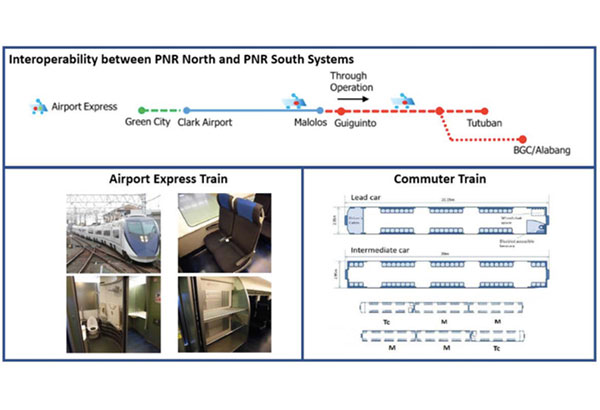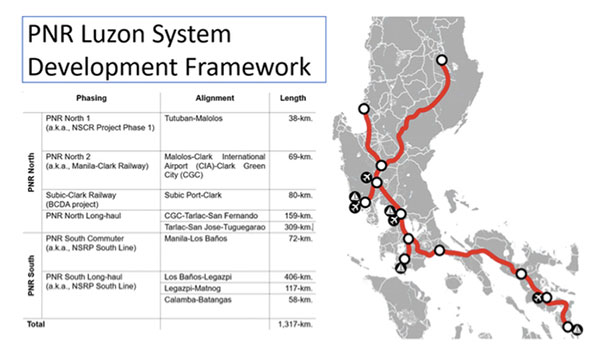Manila-Clark Railway is on its way

A table summarizing details of PNR’s Development Framework for a 1,317-km rail system around Luzon
Metro Manila’s traffic congestion is not only an inconvenience but also a financial burden, costing the Philippine economy losses of around P2.4 billion daily, according to a study of the Japan International Cooperation Agency (JICA). Color coding or limiting the volume of cars are not long-term solutions to solving the traffic problem, especially where mobility options are insufficient in the Philippines. Fortunately, there is progress in developing the country’s mass transit system—specifically with a new 106-km railway project that will run from Tutuban, Manila to Clark, Pampanga.
On Monday, June 26, the Department of Transportation (DOTr) led the marking of five stations of the Manila-Clark Railway Project located in the following areas: Marilao and Meycauayan in Bulacan, Valenzuela, Caloocan, and Tutuban in Metro Manila. Apart from the five marked stations, the project has 12 other stations in Solis, Bocaue, Balagtas, Guiguinto, Malolos, Calumpit, Apalit, San Fernando, Angeles, Clark, Clark International Airport, and the proposed New Clark City in Pampanga.??
“For the first time, a rail project will connect Manila to Central Luzon,” said DOTr Secretary Arthur Tugade.
The Manila-Clark Railway is expected to cut the 2-hour travel time from Manila to Clark to just 55 minutes. Philippine National Railways (PNR) General Manager Junn Magno also sees the project as a way to decongest Metro Manila and spread economic gains throughout the country. “This project will ease traffic congestion and help thousands of commuters coming from Bulacan and Pampanga who travel daily to their workplaces or schools in Metro Manila,” said Magno.
The Manila-Clark Railway is scheduled to begin construction in the last quarter of 2017, and is estimated to be completed by the end of 2021. The project will cost around PhP255 billion, funded through Japan’s Official Development Assistance.
The Manila-Clark Railway forms part of several alignments in the PNR’s Luzon System Development Framework: Tutuban-Malolos alignment with a 37.6-km length, and the Malolos-Clark International Airport-Clark Green City (CGC) alignment with a 68.7-km length. Other alignments include: Subic Port-Clark, CGC-Tarlac-San Fernando, Tarlac-San Jose-Tugeugarao, Los Baños-Legazpi, Legazpi-Matnog, and Calamba-Batangas which make-up a total of 1,317 km of railway in Luzon.
The Manila-Clark Railway is designed to have 13 train sets with a maximum speed reaching up to 120 km per hour. DOTr Assistant Secretary for Rail TJ Batan says there will be no significant traffic disruption during the construction of the Manila-Clark Railway because the project will be building on PNR’s right of way instead of on existing roads.
Population density, concentration of rural development and jobs, and lack of a mass transit system are some of the factors which cause traffic congestion in Metro Manila. The Manila-Clark Railway system is only one of several solutions that are needed to address Metro Manila’s traffic problem, but it is a good start. After all, progress is achieved not only through giant leaps but also through hundreds of baby steps.

- Latest






























